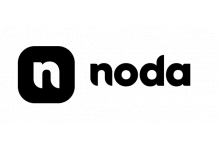Open Banking: The European Challenge

- Brian Hanrahan, Chief Commercial Officer at Nuapay
- 28.06.2019 01:15 pm Open Banking
A common belief in the financial services industry is that traditional banks are under fierce threat from challenger banks, fintechs and global tech corporations, alike. With competition growing by the day, take Facebook’s recent Libra announcement as just one example, many banks are searching for a way out of the struggle.
Enter Open Banking. When it launched in the UK 18 months ago, Open Banking opened the door for third parties to access bank-held account data as well as giving the ability to initiate payments from a customer’s bank. The potential for industry disruption and for financial gain was huge. Indeed, PwC has estimated £7.2 billion in revenue will be created by Open Banking by 2022.
We are now only a few short months away from seeing Europe tackle Open Banking; so what can Euorpean banks learn from the roll-out and reception of Open Banking in the UK?
A British Landscape
Industry-wide consensus is that Open Banking has been slow to take off since it launched in the UK. Indeed, by the time the implementation date arrived (13th January 2018) only four of the UK's nine biggest banks were ready. Nonetheless, we are now seeing some signs of impressive technologies, powered by Open Banking, setting the standard for Europe.
A key reason for the UK’s slow embrace of Open Banking was that the technologies and concepts used were all relatively new. A number of iterations were required when it came to developing and delivering products that meet market needs.
The CMA and Open Banking Implementation Entity (OBIE) tried to help UK banks to overcome some of the confusion surrounding Open Banking by setting and policing progress. As a result, the UK has delivered new services that enhance users financial experiences and most importantly new, safe and secure ways to pay.
The European Extension
The sheer mass of banks and challenger banks involved in the European go-live makes it far more complicated than the UK’s roll-out.
With no equivalent regulatory body, no active policing system or significant government involvement, we are anticipating a considerable variation of standards to be met from country to country. To date, France and Germany have been the leading regions in terms of rolling out standards.
France has been led by STET, a payment processor owned by France’s six major banks, while Germany’s approach to Open Banking has been guided by Die Deutsche Kreditwirtschaft, the German banking committee.
Various banking industry trade groups, such as The Berlin Group, an organisation of 29 players in the payments industry, STUZZA in Austria and SIX in Switzerland have also called for commonality in adopted standards.
The distribution of standards and guidelines by such groups will encourage an expectation amongst providers. Though, as it stands, we have to ask: who will be holding the financial institutions to these standards?
Embracing Open Banking
A key lesson to be learnt from the UK is that embracing Open Banking allows banks and financial institutions to innovate and deliver exceptional services to their customers, despite local and regional nuances. Open Banking requires banks to cooperate with others to deliver the desired objectives of innovation to meet the ever-changing needs of customers.
European banks need to come together and step up to the challenge of Open Banking. They need to see it as an opportunity to enhance banking capabilities and deliver for increasingly tech-savvy consumers both within and cross country borders, rather than a complicated regulatory must-have. If they can do this then we will no doubt come to see Europe as one of the leading financial regions when it comes to offering new and innovative customer-focused products and services.
























